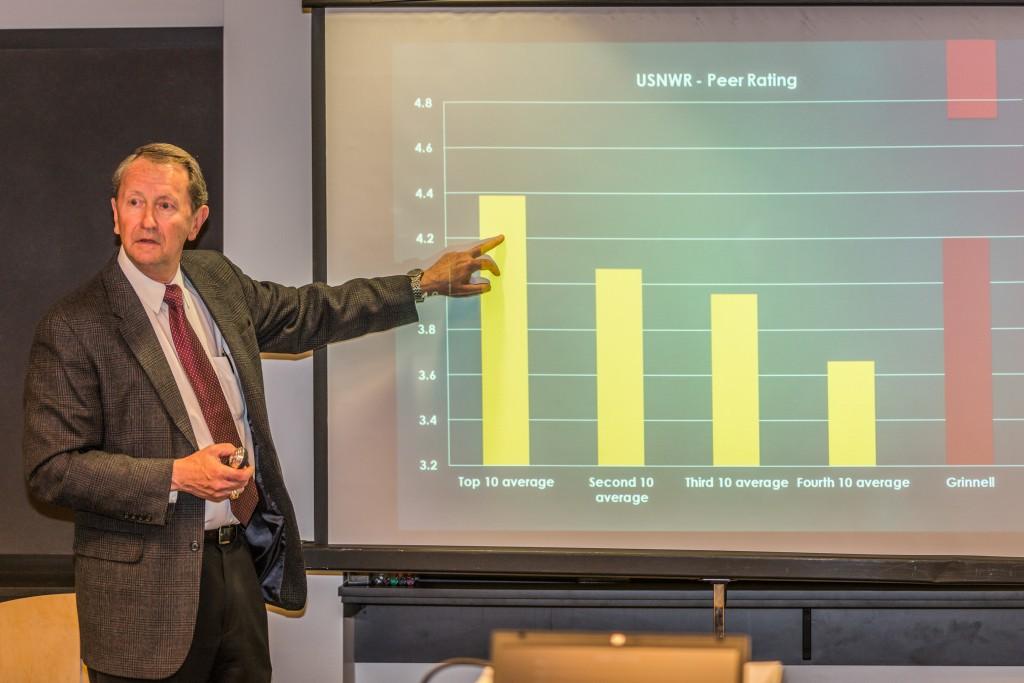National rankings are a common tool that prospective students use to assess potential colleges. Institutions also use rankings to determine where they fall in relation to their peers. However, Grinnell is reconsidering the way it looks at these rankings.
On Thursday, Sept. 25, members of the Office of Analytic Support and Institutional Research met at the John Chrystal Center with students and college staff to discuss the rankings given to the College by multiple reviews.
During this meeting Randy Stiles, the Associate Vice President for Analytic Support & Institutional Research, Kaitlin Wilcox and Carlie VanWilligen, the Assistant and Associate Directors of Analytic Support & Institutional Research respectively, presented a detailed analysis on how different rankings should be interpreted by the College.
“We are tracking seven reviewing systems. We are actively studying them and recording results each has a different focus,” Stiles said. “However, there are methodological problems with each one in some shape or form.”

Photo by Chris Lee
He also explained why there was a variability in the scores Grinnell obtained across different measures.
“All of these measurements are based on somebody else’s value system. They are people who look at us from a distance and value different things,” he said. “There is in some cases objective data and in some cases subjective data that are taken into account.”
Stiles ended his part of the presentation with a comment regarding the measurements used to evaluate colleges and how these are open to variation.
“It is a complex system. In U.S. News our ranking has been stable since 1999. While, on the Forbes scale we have fluctuated over the years. I believe this happens because with new systems like this, the methods [of] collecting data change and that affects the outcome,” Stiles said.
However, VanWilligen said that often times the older systems and rankings are the most influential.
“I would say the U.S. News is the granddaddy of rankings because it is old and the best known,” she said. “Every year we get an overall score, and every year our overall score is 84 out of 100, that has to mean something. However, our ranking has fluctuated throughout the years. So, the fact that we are constantly in the top 25 percent means we are meeting our goals and that we are meeting our mission.”
In the presentation, Wilcox encouraged everyone to only think of rankings as one part of the overall assessment of the College.
“We do not want to be driven by rankings. Yes, they are something to look at in detail, but we want to do whatever is best for our students,” she said. “Rankings are one way to describe an institution, they provide a baseline measure but not a holistic one … There are many things that make Grinnell amazing that are not captured in these rankings, an example being the sense of community found here.”
The discussion ended with a short talk about how Grinnell’s rankings play a vital role in attracting prospective students and how the College aims to address this factor. This issue is particular important given Grinnell’s recent marketing efforts to improve the conceptions of Grinnell as a ‘bargain’ school.
“In the student survey given to freshmen, it can clearly be seen that rankings given by national magazines are not that important to students who decide to attend Grinnell. Rather, they give more importance to financial aid and the diverse programs the College provides them with.”
VanWilligen added that despite not being a full measure of Grinnell’s value or progress, rankings should not simply be ignored.
“We are great but we want to be at that next level,” VanWilligen said.



















































